An explanation of what we're doing here can be found in my introduction post.
Last week, we reached the nadir of our fortunes with the latest batch of 3DO games when we looked at Road Rash, Alone in the Dark, Way of the Warrior, Road & Track Presents: The Need for Speed, and Plumbers Don't Wear Ties.
Last time with the PS1, we waded our way through early June '96 with Top Gun: Fire At Will!, V-Tennis, A-Train, and Frank Thomas Big Hurt Baseball.
We'll now continue through mid-June with Darkstalkers: The Night Warriors, NAMCO Museum Vol. 1, Epidemic, and International Track & Field.
**This post is also featured on my site, fifthgengaming.blog, and can be found here.**
----------------------------------------------------------------------------------------------------
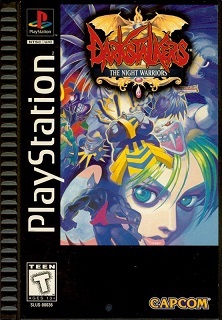
Darkstalkers: The Night Warriors
Developer: Capcom
Publisher: Capcom
Release Date: 6/10/1996
Time to Hi Felicia: 36 Minutes
I said we would eventually get to this point in my last post in the Saturn series, and here we are. I also promised that I would spend the intervening months trying to figure out what the deal is with the Darkstalkers franchise, which was a bold-faced lie. I still have no idea what was going on with Capcom that caused them to make three of these and then bury the series forever. That said, I'm always ready and willing to dive into one of these games for at least half an hour.
This being the first game in the series, it's more primitive in just about every way compared to Darkstalkers' Revenge. I don't hold that against the game, but that does make it weird that this console port came out after its sequel and also after Street Fighter Alpha, which is also kind of its sequel, but we'll get to that later. Or maybe not. I've seen more than one date for this game's release, and I've used the June date because I felt like it. You can also find a claim that this came out the same week that its sequel was released for the Saturn. I have no idea if that's real, but it seems that there was also a pattern in the Japanese releases where the second came out before the first as well. Not to mention SF Alpha came out before either of these in both Japan and North America, but I'm getting ahead of myself again.
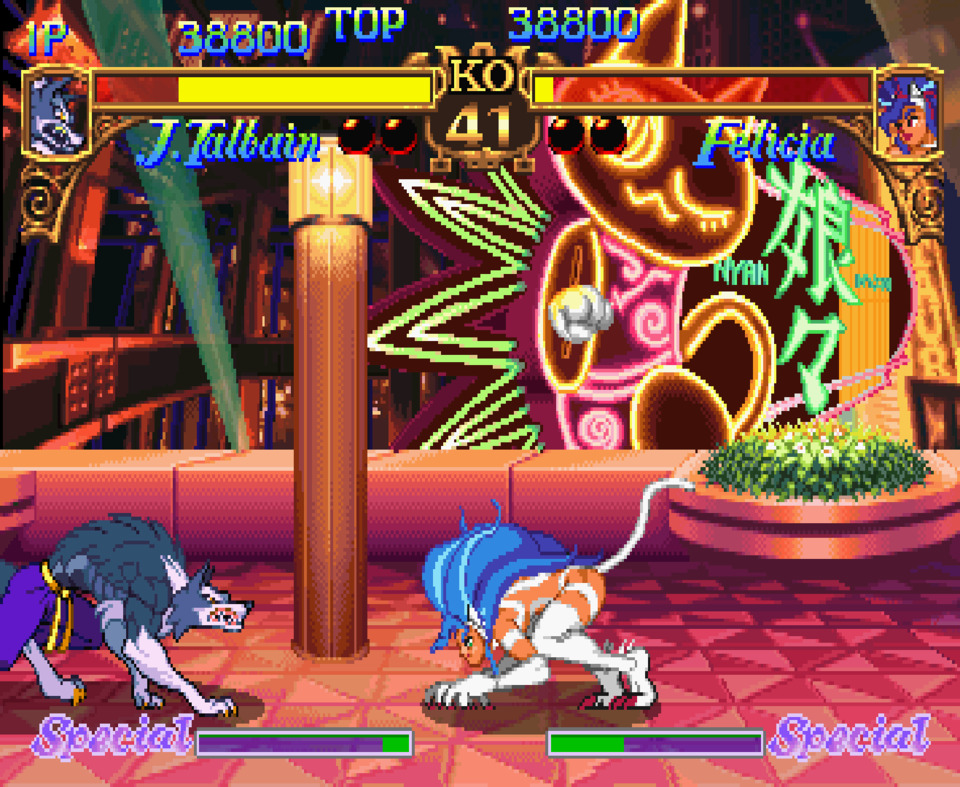
So, what is Darkstalkers anyway? It's a 1v1 2D Fighting game featuring cartoony interpretations of B-movie horror monsters. The core cast includes Succubus Lady Everyone Recognizes, Vampire, Frankenstein, Werewolf, Feral Catgirl, Mummy, Sasquatch, Demon Samurai, Creature From The Black Lagoon, and Actually Just Johnny Rotten. There are also two non-playable bosses, Space Robot and Space Demon who are narratively here to destroy the world, as one does. Being a Capcom Fighting game, it uses a six-button layout and a lot of quarter-circles in the moveset. It plays and feels as you would expect if you've ever played any 90's Street Fighter.
I still haven't felt out who my main should be for this series. I thought it would be Jon Taliban but that has yet to work for me. My knifey jiangshi waifu doesn't show up until the second game, so I wound up randomly experimenting in this one. I eventually had the best luck with Rikuo, making it all the way to the final boss before the game slapped me down. Though, that's probably due to his easily exploitable heavy attacks more than anything else. I'm still unable to consistently pull off combos, though the ones here seem simple enough that it might be possible to learn them.
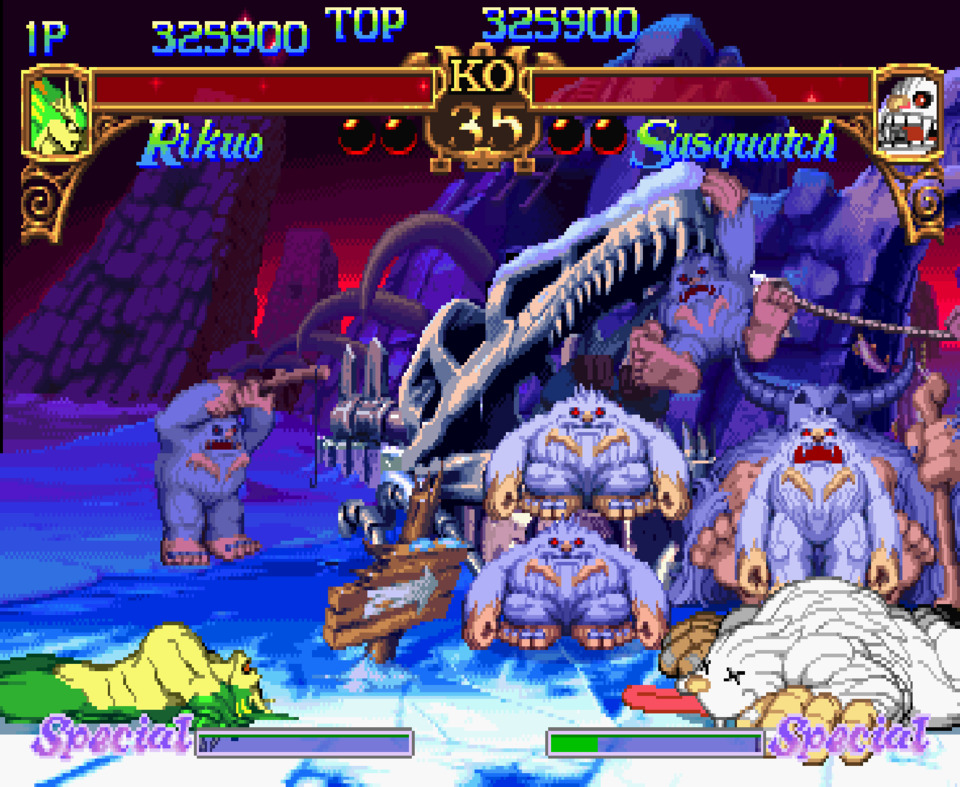
Yet, the gameplay isn't the main draw here. As with all of the Darkstalkers games, this thing is a visual tour de force for its era. The animations are expressive and detailed, the backgrounds look good, and the music fulfills its role of reinforcing the fun and colorful mood. Taking a subject that is supposed to be grim or scary and turning it into some colorful and silly is a tried-and-true way of generating humor. Using that on already campy monster stereotypes would be difficult to pull off, and it speaks to the artistry of this team that the game pulls it off so well. Darkstalkers was and is fun to just look at and let wash over you, even if playing it isn't the best time.
That brings us back around to where this game fits and what may have contributed to the franchise's lack of staying power. From my admittedly incomplete background knowledge, this was Capcom's Next Big Thing after milking Street Fighter II for all it was worth. Capcom had spent the three years from early '91 to early '94 releasing version after version of SFII to arcades and they were running out of things to do with it. They seem to have worked on multiple concepts using the updated game engine from Super Street Fighter II Turbo, with Darkstalkers being the first. There was also a whole thing with Marvel, but we'll get to that in a few weeks. Carrying the fighting engine to a new IP allowed the developers to mess around with the systems, character archetypes, and balance. I'm physically incapable of getting into the weeds on the gameplay updates introduced here, but just know that Capcom's base Fighting game design was advancing with the Darkstalkers games.
This series would be quickly thrown to the wayside when Street Fighter Alpha got big and the memorable characters from this would eventually get absorbed into the Versus series, which is again a story for a different time. I think these games deserved better, personally. I'm probably last to the party on that opinion.
----------------------------------------------------------------------------------------------------
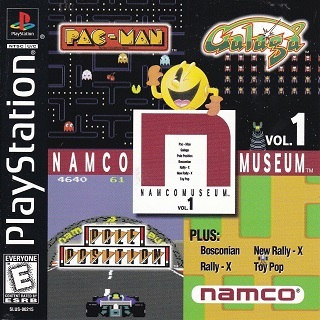
NAMCO Museum Vol. 1
Developer: Namco
Publisher: Namco
Release Date: 6/10/1996
Time to Exiting Through The Gift Shop: 55 Minutes
We've now reached our second arcade compilation. This time Namco has decided to get in on the fun with their first, and by no means last, collection. There's five of these things in total and we're going to see one every six months or so for the foreseeable future. Now, the issue with selling game compilations, or what would turn into HD remasters in this day and age, is in creating a package worth the full price of admission. We've previously seen Digital Eclipse tackle the issue with their Williams collection by including a wealth of documentary material about the development and design of the old arcade games featured in it. I find that extra info to be more interesting than the games themselves, but that's just me. Here, we see Namco trying, let's say, a different approach.
This first volume is anchored by three of Namco's most recognizable arcade games from the early 80's: Pac-Man, Pole Position, and Galaga. We also have Rally-X, Bosconian, and Toy Pop keeping those games company. I'm not an expert on early arcade games, and sadly this collection does little to enlighten me on that subject. What this does accomplish is surprisingly good emulation of those old arcade boards and presenting them in the least efficient way possible.
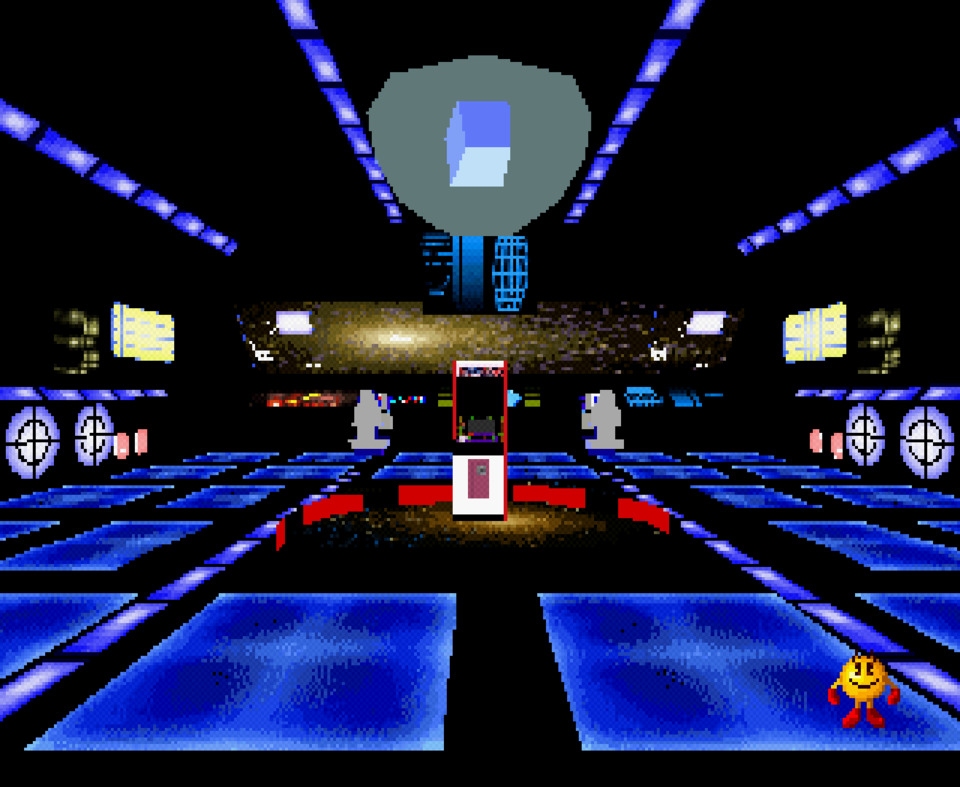
You might think the word 'museum' was added to the title as a cute way to sell a small collection of crusty old games. Yet, no one told the developers to not take that name literally because all of the content in this thing is presented in a polygonal 3D museum environment. You walk very slowly in first person through museum exhibits for each of these games and you play them by interacting with polygonal representations of their arcade cabinets. The package leans heavily into its visual metaphor. For example, when you start the disc you spawn in a reception lobby and you have to talk to a receptionist to register your save file. The problem is in the contents of the exhibits themselves, which consist of old marketing materials, scans of various stickers that would have adorned the cabinets, and basic tips or tricks. We don't learn the stories behind the games or why they matter, which is the issue with most arcade compilations. In that sense, this is a lazy package. We end up with a weird disconnect between the high level of effort put into the museum environment and the relatively low effort behind the materials that environment is meant to showcase.
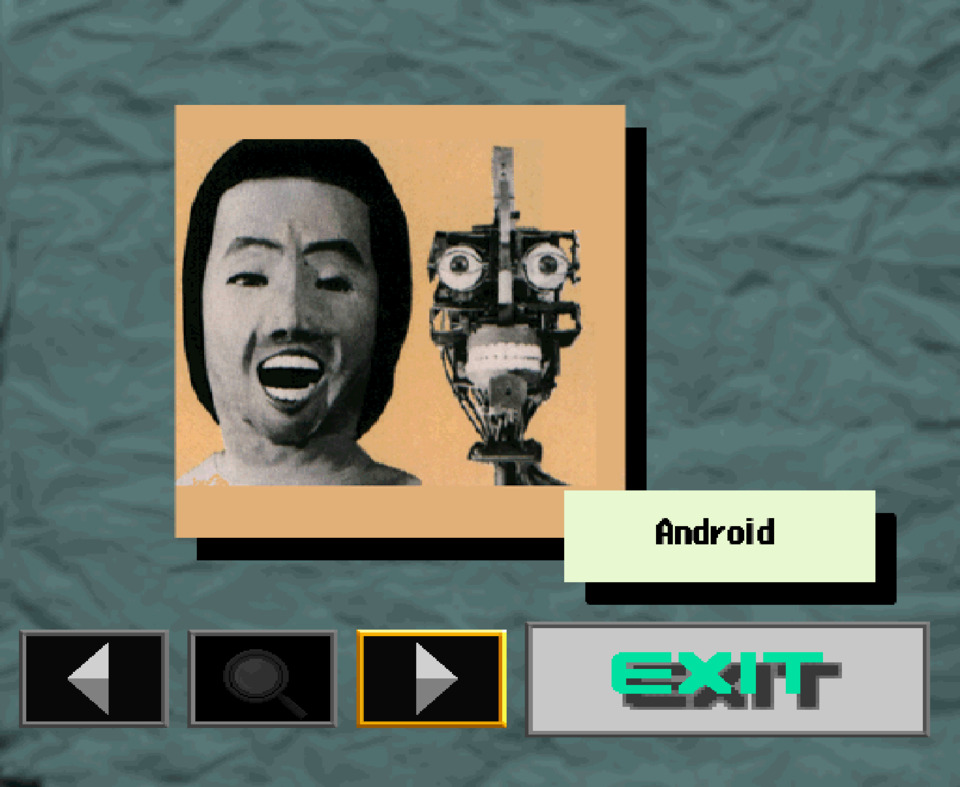
The games themselves are fine. Everyone should know what Pac-Man and Galaga are, and Pole Position was an influential early Scaler Racer. For the others, Rally-X is basically just a worse version of Pac-Man with cars, Bosconian is an interesting free-roaming space shooter that reuses sound effects from Galaga, and Toy Pop is a weird top-down Maze Shooter that feels kinda like a reaction to Bomberman. The famous games wouldn't have needed much introduction, but I don't feel any closer to understanding the importance, if any, of Toy Pop. Fortunately, five of the six games are good, I'll see Rally-X in hell, so there is a decent time to be found here. The most interesting aspect of the emulation is the way this thing handles the settings for each game. Bringing up the pause menu at the title screen of each game, which is coincidentally also the only way to quit out to the museum, will let you fiddle with virtual representations of the switches that would have been on the actual arcade board. I think this is a cool way to adjust the settings while also showing the player how the original machines would have worked.
There's a little bit of extra material regarding random topics around Namco in the early 80's, such as the semi-official Namco fan zine, NG. The first dozen or so covers of that magazine can be found in the museum lounge. I've firmly come down on the side of Digital Eclipse's method of repackaging old games, as FMV interviews add so much more to the experience than sterile museum levels. Though, I will recommend everyone reading this find a way to poke around with Bosconian, which is probably the most interesting early 80's arcade game you've never played; described by a random guy on the internet as "…too beautiful for this world." If you want to learn more about early Namco history or what else that random guy thinks about things, I recommend checking out the Namcompendium blog.
----------------------------------------------------------------------------------------------------
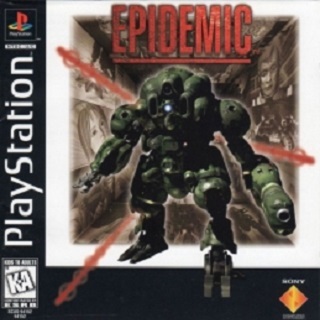
Epidemic
Developer: Genki
Publisher: SCEA
Release Date: 6/14/1996
Time to Tripping The Alarm: 17 Minutes
A specter is haunting the Playstation, and its name is Genki. The constant, unwavering frenemy of this blogging project has appeared once again. You know Genki, I mean, everyone knows Genki. They're the mid-tier SNES racing game developers who thought Iron Angel of the Apocalypse was cool and wanted to make their own. This studio was responsible for the early Saturn and PS1 games Robotica and Kileak: The DNA Imperative (pronounced "kill-eek") respectively. They also made Burning Soldier and Hang-On GP for some reason. Now, they're inflicting their third attempt at a mecha FPS with a direct sequel to Kileak. The original title for this thing was Kileak: The Blood: Reason in Madness, which I think slaps as a game title; but with almost no brand recognition in the west for Kileak and an inherent allergy to double subtitles in the English language, it ended up releasing here with the unfortunate name Epidemic.
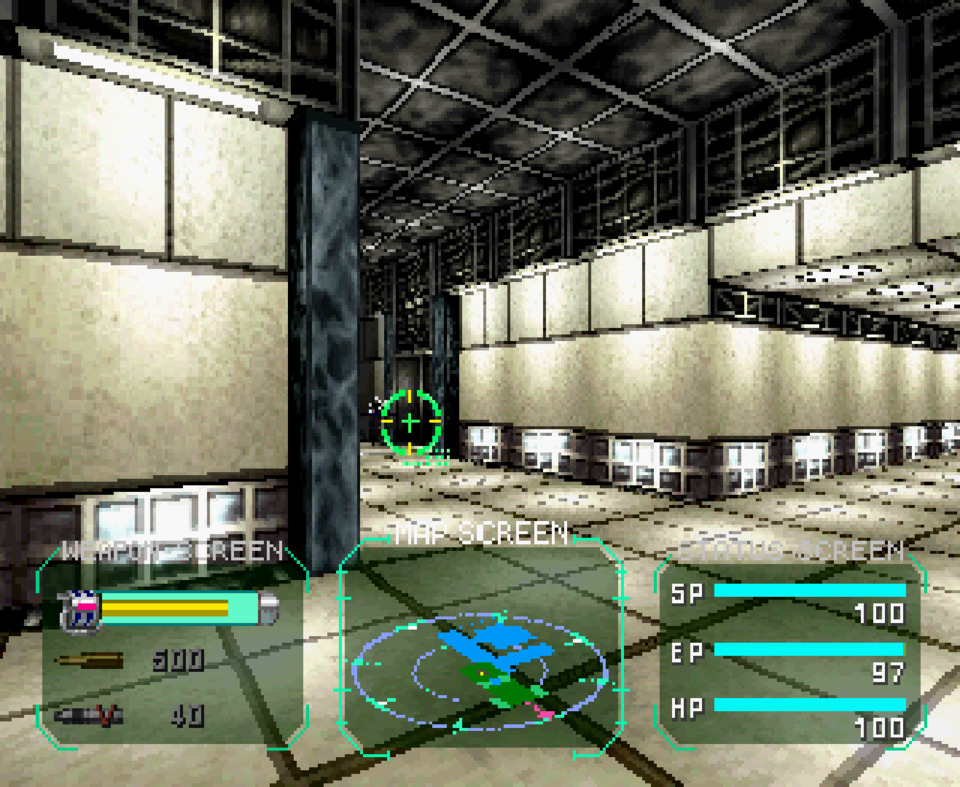
Being the third one of these, they've figured out how to design the controls, user interface, and environment around the constraints of the PS1's interface. That means the act of moving around and doing things is basically fine. Sadly, now that they've figured that part out, they went ahead and started adding gameplay mechanics on top of the standard Corridor Shooter formula. This includes slightly deeper weapon management, a mission-based structure, mech upgrading, and a kinda convoluted enemy alert system. For the large part, the new gameplay elements don't improve the experience. The mission structure means that there's no saving mid-level anymore, and there aren't any mid-mission checkpoints to compensate. There are three weapons you can switch between: a recharging laser, gun, and rockets, but the balance of damage-to-resource consumption feels off.
The most damning thing, though, is the encounter design. Instead of the barebones single-enemy-behind-every-door approach taken previously, we get a variety of patrolling enemies with limited detection ranges. The idea is that you need to deal with a unified security system, where patrolling bots, cameras, and turrets will act in unison, leading to a kind of rudimentary Active Stealth mechanic. This works poorly. The bots are infinitely spawning once an alert is activated, and the turrets do a lot of difficult to recover damage. The whole thing is poorly balanced when combined with the wonky aiming. This is like one-fifth of the way to being an early Immersive Sim, which is a genre you don't want to half-ass, much less one-fifth-ass. The various parts come together into something that isn't quite as unplayable as Defcon 5 but winds up somewhere in the neighborhood.
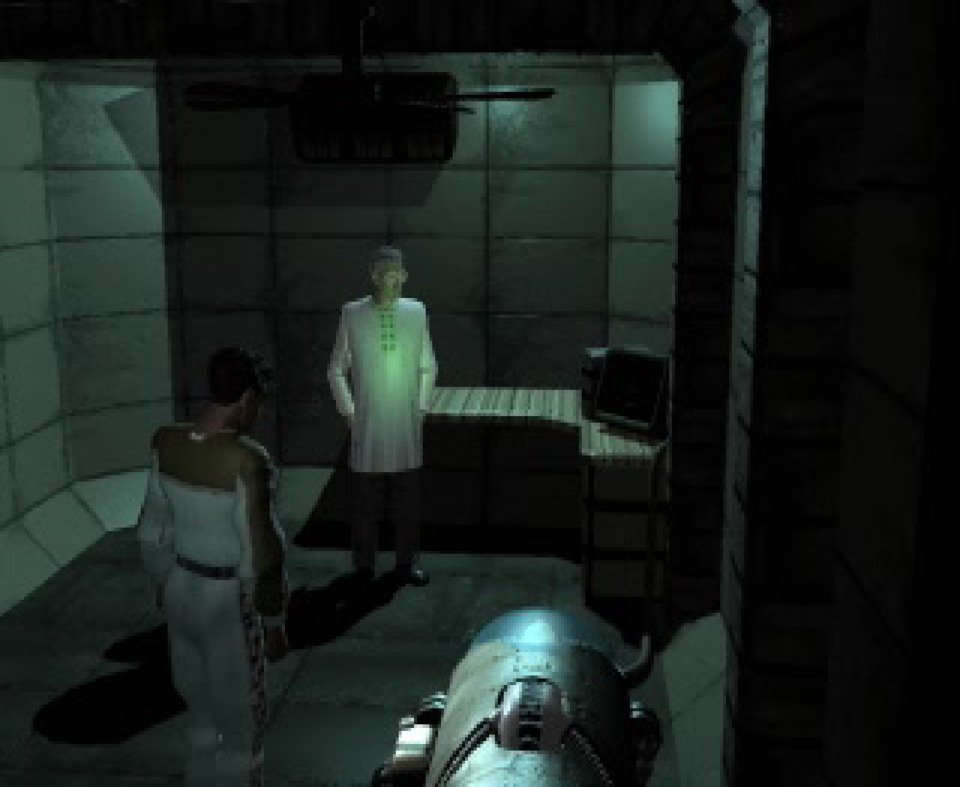
That's a shame, because Genki has doubled down on their tendency towards overwriting and under presenting their game stories. This game takes place 27 years after the events of Kileak. Remember the events of Kileak? Me neither. That game ended with the super-secret Antarctic mad science base getting blown up after you shoot the horrible biomonster a lot. Apparently, doing that released a world-ending plague on the world. The last bastion of humanity lives in an underground city controlled by a corporate police state. This time, you play as the son of the original voiceless protagonist, who wants to get to the surface to look for a cure for the world-ending disease keeping everyone underground. He goes through some twists, turns, and a eventually has a new biomonster to deal with. There's like half-a-dozen characters floating around the story, which is a lot for Genki. It's a given that every line read is bad and the CG cutscenes are worse. This is still endearing, though not as much as in the first game. Sadly, after all this time, Genki still hasn't been able to match the immaculately fucked vibes from Iron Angel of the Apocalypse.
----------------------------------------------------------------------------------------------------
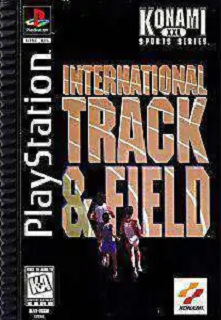
International Track & Field
Developer: Konami
Publisher: Konami
Release Date: 6/15/1996
Time to Developing Carpal Tunnel: 23 Minutes
The Atlanta Summer Olympics were held from July 19th to August 4th, 1996. All I'm publicly willing to admit to knowing about those games is that there was an infamous bomb scare and America is #1. For our purposes, this all means we get to deal with bad Olympics sports games coming out in the summer of '96. This is only the first of these we'll be seeing, which is the only ominous foreshadowing I'm giving you. Now, this isn't a licensed Olympics game but an installment in Konami's long-running Track & Field franchise. Yes, that Track & Field, the one you're thinking of. Apparently, after the first game, Konami realized they should put out sequels to coincide with the Summer Olympics. This isn't the last time we'll see this series, so we'll get into the details of its fate some other day.
In the years since the original NES release, they've been able to increase the number of events up to 11. In this iteration we have *inhale* 100m sprint, 100m hurdle, 100m freestyle swimming, long jump, triple jump, high jump, pole vault, javelin, shot put, discus, and hammer throw. That's some variety, but there are only like three types of gameplay between them. The running, swimming, and high jump events use a two button run one button jump setup, the other jumps and javelin use a two button power meter and one button angle meter setup, and the throwing events use a two button power meter and a timed directional throw button. There isn't even much variation between those three gameplay types. If you're wondering whether this thing encounters the same problem as the original, the answer is YES. I stopped playing after 20 minutes because my old man hands began cramping real bad.
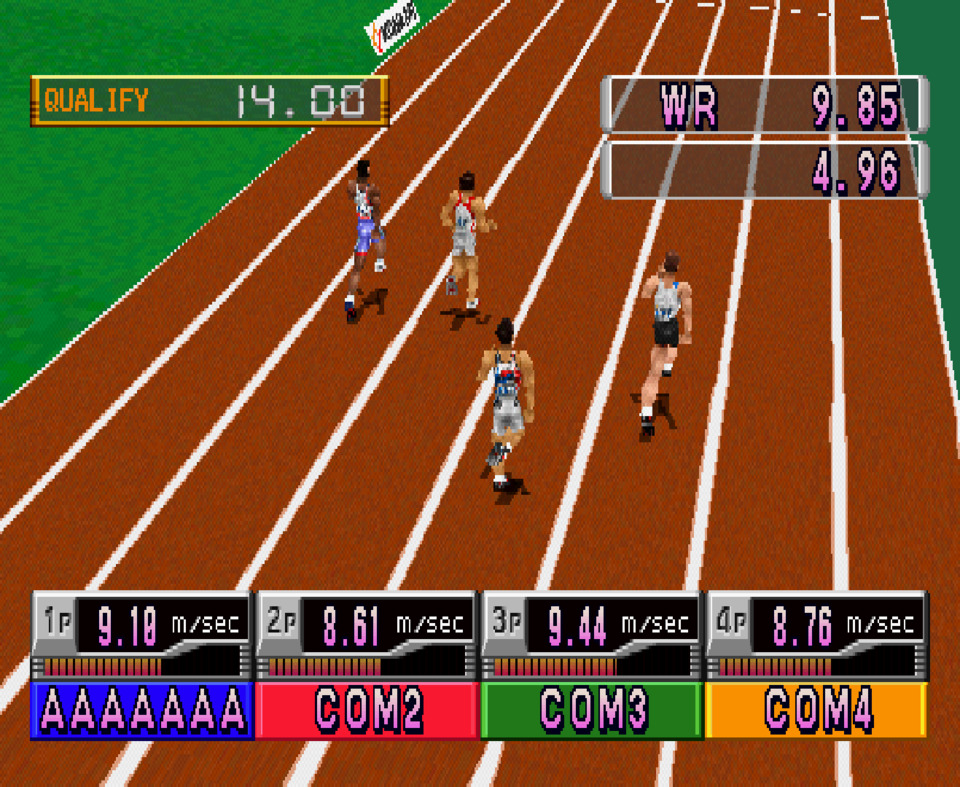
Even if you practice and adhere to the most ergonomic possible method of playing this thing, commonly referred to as the Otter Technique, there isn't much to do. There's a practice mode and a for real mode, though that only matters for scoring. There's also jump-in multiplayer functionality for up to four players in some of the events, which is likely the main selling point. In singleplayer, when you play an event you record your time, win a medal or not, and get sent back to the event select menu. You could get a full experience with this thing in less than an hour. Considering that the gameplay hasn't advanced in the 13 years since the original game, there wouldn't have been much to recommend this thing. Four-player isn't even possible on the PS1 without an accessory, so I don't know what Konami was trying to accomplish here, besides the cheap cash-in of it all. This thing reviewed well at the time, so maybe I missed something. Regardless, my hand hurts and I think I took a good chunk of usable life out of my controller, so I wouldn't recommend this game in any time period.
----------------------------------------------------------------------------------------------------
My hands are broken but my spirit is still willing to continue. Let's update the Ranking of All PS1 Games and awkwardly hurdle our way out of here.
1. Air Combat
…
16. Darkstalkers: The Night Warriors
38. NAMCO Museum Vol. 1
56. Epidemic
65. International Track & Field
…
97. World Cup Golf: Professional Edition
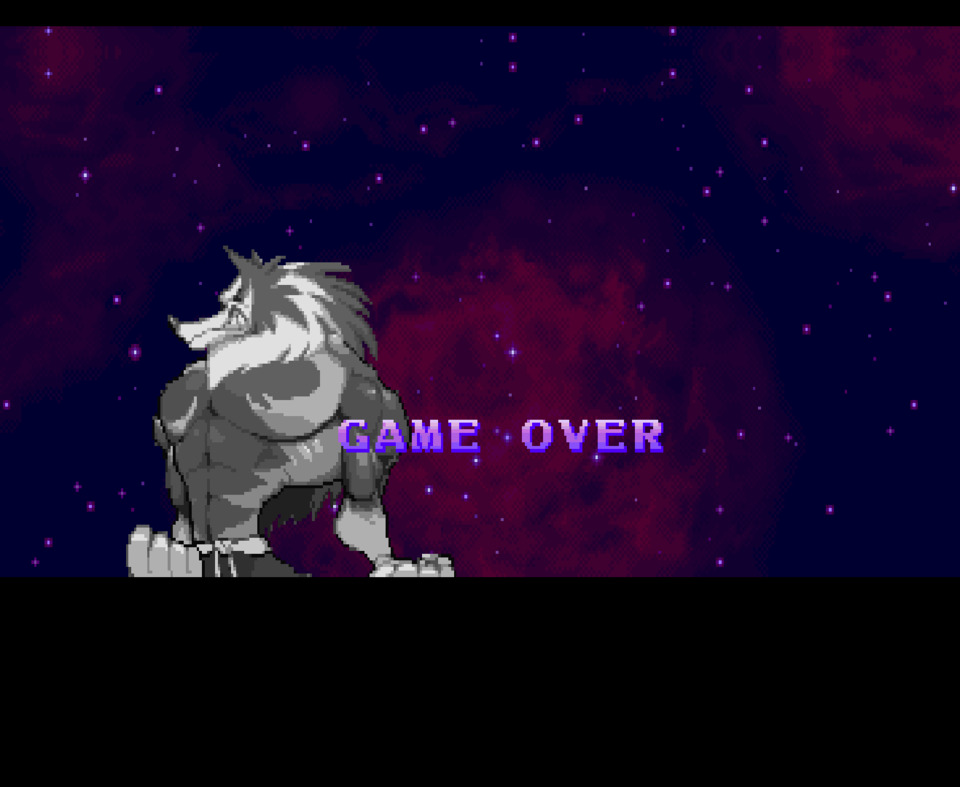
Next week we're going to finally wrap up the PS1's releases for the front half of 1996. Will we go out with a bang or a whimper? Only time will tell as we look at Olympic Summer Games, True Pinball, Fade to Black, and Shellshock.
----------------------------------------------------------------------------------------------------
This is your last chance to send in any questions you have before 9/6 either through DM on Giantbomb or the contact form on the wordpress site. I'll put those into a Q&A section at the end of Part 027 to celebrate reaching the 100th PS1 game.
Also, I stream twice a week over on my twitch channel: https://www.twitch.tv/fifthgenerationgaming. We're diving into the depravity of the 3DO and continuing my hare-brained scheme to play every PS1 RPG to completion.
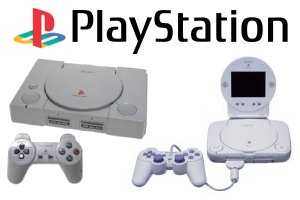
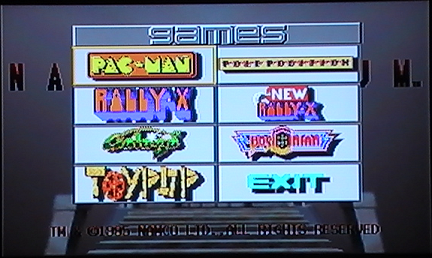
Log in to comment